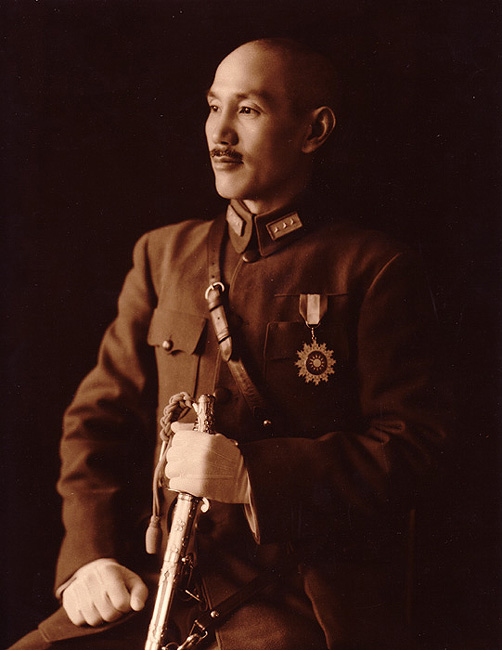This was slightly updated in 1930 but was almost identical.
Now, in May 1938, the Japanese change their uniform dramatically, opting for the stand and fall collar, moving the rank tabs from the shoulders and up to the collar.
The thing is, this uniform is almost identical to the existing Chinese Kuomintang's National Revolutionary Army. Here's Chiang Kai Shek wearing it, the two differences between it and the Japanese 1938 uniform is that the Chinese uniform has external pockets and uses triangles instead of stars for ranks. This uniform also came in a wadded, wintery blue uniform for some units.

http://www.gutenberg-e.org/osc01/images/osc05ai.jpg
The uniform seems to be a militarized style of the Zhongshan or "Mao" suit, popularized by Sun Yat Sen. Here's Chiang wearing a shoddier version of the uniform during the Northern Expedition. The service cap he's wearing seems to have been largely replaced by the flatter, field cap by 1937.
Note, no rank bars are attached to his collar.

http://img.timeinc.net/time/magazine/ar ... 11_400.jpg
My questions are; (I hope someone can provide an explanation for the first one) why did the Japanese change their uniforms so dramatically? They look very, very similar to their Chinese enemies. At least when they wore shoulder passants, they could tell themselves apart. Why the dramatic shift?
Also, when did that uniform become standard for the Kuomintang's Army? I believe they wore it during the 1932 Shanghai War.